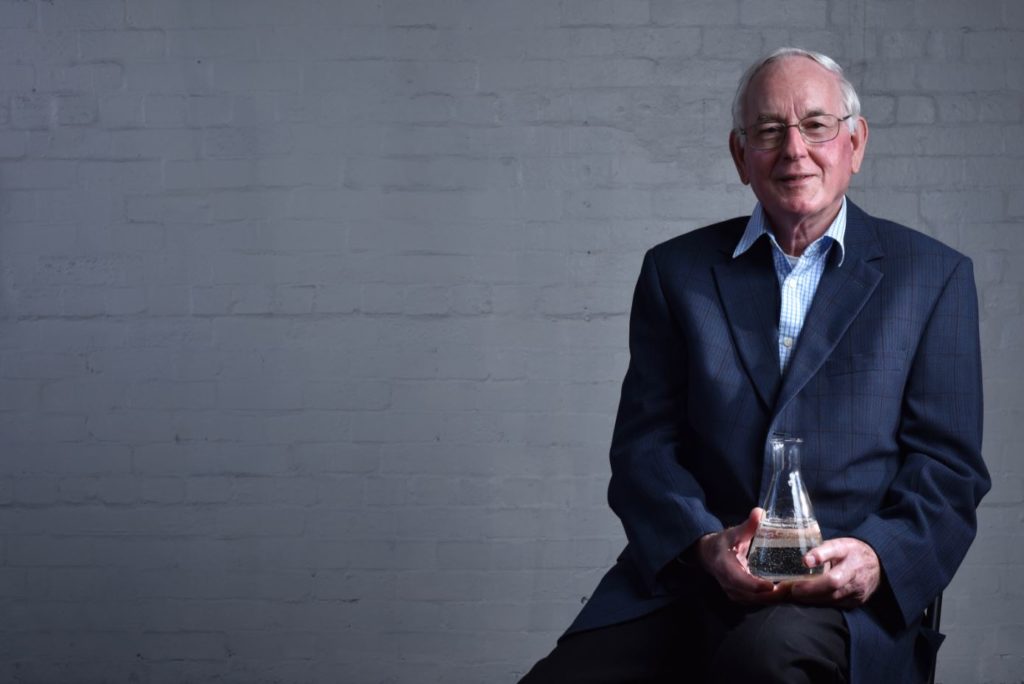Geoff Grace played a key role in Manildra Group’s growth, parallel to that of Australia’s paper industry, in the 1970s and 1980s.
The Technical Manager’s expertise and heavy involvement with the paper industry at the time led to starch sales becoming a pillar of strength for Manildra Group – and an investment that would prove pivotal to the skyrocketing future growth of the 100 per cent Australian familyowned international agribusiness.
It was in 1970 when Manildra Group Chairman Dick Honan made what Mr Grace said was a “brave” move to purchase the Horlicks starch plant at Nowra, on the NSW South Coast.
“This provided much-needed space and facilities for a major expansion in starch and gluten output that had not been possible at Manildra’s former starch facility in Auburn, due to space and environmental limitations,” said Mr Grace.
His advanced technical knowledge proved instrumental in the innovation and development of Shoalhaven Starches plant at Nowra into one of the world’s largest gluten and starch facilities of its kind.
“Dick’s ambition and drive made this work – it was a brave move,” recalled Mr Grace of the “huge challenge” managing growth in ’70s alongside “phenomenal” investment in the facility.
Along with strengthening and brightening paper, Manildra Group’s starches are used for value-adding uses such as strengthening cardboard or making food from lollies to sauces and noodles.
Manildra Group General Manager Peter Simpson said the ace up Mr Grace’s sleeve was his ability to share with customers and co-workers his “profound knowledge” of starch’s technical elements and value in food and industrial uses.
And as a man of “extreme integrity, reliability and honesty”, Mr Grace’s authenticity is reflected in his approach to customers as the steady hand to “seal the deal”.
“Geoff was welcomed by all the paper mills across Australia, where he provided advice on the use and potential of the Manildra starch in the paper industry,” said Mr Simpson.
“It was a win-win business relationship with the paper mills of Australia.”
At Shoalhaven Starches, Mr Grace worked mainly to streamline production flows – improving sustainability and cost-efficiencies through a closed-circle, fully-integrated system – including assisting Energy and Sustainability Manager Brian Hanley set up the on-site environmental farm in compliance with environmental regulations.
He also spent two years in the United States in the ’70s, where he was instrumental in establishing Manildra’s starch and gluten production plant at Minneapolis.
“The gluten capacity and market continued to grow and drove ongoing investment there,” Mr Grace said.
“While the gluten sold itself, it was harder competing with corn starch. But our high-quality, premium Australian wheat set our starch apart from the rest.”
Mr Grace joked that while survival was his greatest achievement, he was personally most proud of the development of cationic wheat starch, prompted by an industry change from acid sizing to neutral and alkaline sizing. He said it become necessary to reformulate cationic starch to suit changed conditions and found that, for a variety of technical reasons, the new formulations worked best with tapioca starch – which is now the industry standard.
He also travelled extensively with Mr Simpson for business, with trips to Japan, Taiwan, Philippines and Indonesia about industrial starch exports, largely for the offshore paper industry.
The two made a great team, with the “far more extrovert” Mr Simpson “getting them all revved up” for Mr Grace to follow-up with all the technical detail and advice.
In reflecting on his 41 years working with Manildra Group, Mr Grace described Chairman Dick Honan as “obsessive about his business, passionate and incredibly generous”.
“Major products are fuel and food, both essential for daily living – the sky’s the limit for Manildra Group,” Mr Grace said.
